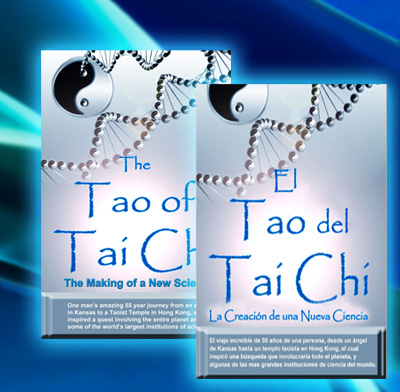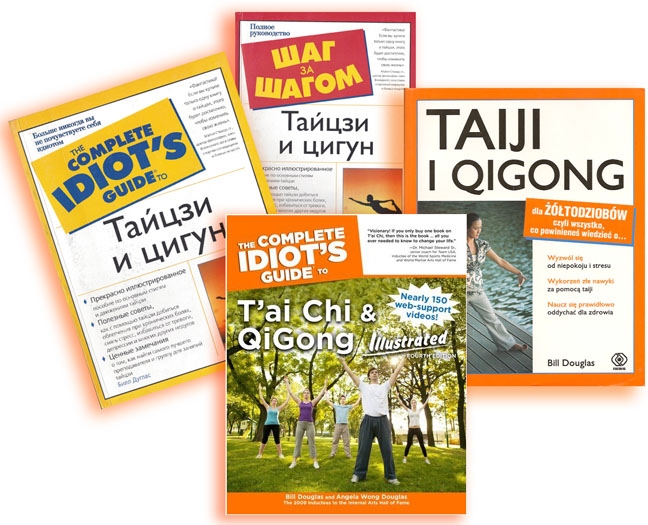BALANCE and Tai Chi & qigong
BALANCE and TAI CHI!
Try tai chi to improve balance, avoid falls
Tai chi
helps improve balance because it targets all the physical
components needed to stay upright—leg strength, flexibility,
range of motion, and reflexes—all of which tend to decline
with age.
Click for article at Health.Harvard.edu
Aug 23, 2012
A total of 24 studies were
selected, 10 being randomized controlled trials and 14 being
nonrandomized controlled trials. Twenty of the studies
produced evidence favorable to using Tai Chi to improve
postural control, indicating sufficient support for Tai Chi.
Support for the reduction of falls was especially strong since
8 of 10 randomized controlled trials reported fall reduction.
- Medscape Today, from WebMD, 10/26/2010
Institute of Chicago indicates that people with
moderate balance problems can be helped by practicing T'ai
Chi. Participants...of the 2 month course ...experienced about
a 10 percent improvement in balance. An Emory University study
supports Hain's findings.
Prevention Magazine
V. 46 Dec. 94 p. 71-72
Exercise subjects showed
significant improvement on 5 of 14 items in the Berg Balance
Scale and on the total score. Leg strength increased
significantly on post-test as measured by the Wall-Sit Test.
Control subjects reported 6 falls and exercise subjects no
falls during the follow-up year.
-- Journal of
American Medicine of Women Association, 59, 255-61.
Long-term Tai Chi practitioners had a significantly
faster reflex reaction time in hamstrings and gastrocnemius
muscles and a longer balance time on a tilt board than
short-term Tai Chi practitioners and nonpractitioners. Both
long- and short-term Tai Chi practitioners had significantly
less knee joint angle-repositioning error than
nonpractitioners.
-- Archives of Physical Medicine
and Rehabilitation, 87, 82-7
Tai Chi
subjects, but not controls, significantly reduced both TA
response time and occurrence of co-contraction of antagonist
muscles of the perturbed leg. Clinical balance measures also
significantly improved after Tai Chi. Tai Chi enhanced
neuromuscular responses controlling the ankle joint of the
perturbed leg. Fast, accurate neuromuscular activation is
crucial for efficacious response to slips or trips.
-- Aging Clinical and Experimental Research,
18, 7-19
Greater balance was noted in the Tai
Chi group.
-- Journal of Gerontological Nursing
22(10), 12-17
Statistical analysis
demonstrated that, after 4 and 8 weeks of intensive Tai Chi
training, the elderly subjects achieved significantly better
1) vestibular ratio in the sensory organization test and 2)
directional control of their leaning trajectory in the limits
of stability test, when compared with those of the control
group. These improvements were maintained even at follow-up 4
weeks afterward. Furthermore, the improved balance performance
from week 4 on was comparable to that of experienced Tai Chi
practitioners.
-- Medicine and Science for Sports
Exercise, 36, 648-57
The elderly
people who regularly practiced tai chi not only showed better
proprioception at the ankle and knee joints than sedentary
controls, but also better ankle kinaesthesis than
swimmers/runners. The large benefits of tai chi exercise on
proprioception may result in the maintenance of balance
control in older people.
-- British Journal of
Sports Medicine, 38, 50-4
Effect Of
Knee-protected Tai Chi Aerobic (KPTCA) For Community-dwelling
Middle-aged Adults
National Taiwan Sport
University, Taoyuan, Taiwan
CONCLUSIONS: These
results indicated that the KPTCA is effective in improving
dynamic balance, lower extremity flexor strength, and aerobic
capacity in community-dwelling middle-aged adults. These
improvements may increase the ability of the middle-aged to
face the physical challenge in the everyday life.
FIND MUCH MORE RESEARCH AT THE "QIGONG INSTITUTE DATABASE"
Since 1984, collecting breaking medical/science research on
Qigong, Tai Chi, Yoga, and Mind-Body Education
Click here
for Qigong Institute Database...
* NOTE: World Tai Chi & Qigong Day advises
consulting your physician before beginning any new exercise,
herbal, diet, or health program. The research listed here is
meant to stimulate a discussion between you and your
physician, health insurance carrier, etc., not as medical
advise. Research and comments provided here are hoped to
stimulate a more robust discussion of powerful natural
mind/body health tools. Popular media, health media, and
government must increase attention to stunning emerging
research, including the UCLA study indicating Tai Chi
participants enjoyed a 50% increase in immune system
resistance to viral infection.
- To learn more about tai chi & qigong medical research,
see the below book,
"the complete idiot's guide to tai chi & qigong,", and also
"Harvard Medical School Guide to Tai Chi," and
"The way of qigong: the art and science of chinese energy healing."
Click to purchase this acclaimed best-selling Tai Chi book, with nearly 150 web-video support videos for the detailed text/illustration instruction as a "gift of health" for loved ones.
A new paradigm in multi-media educational books.
"Visionary! If you only buy one book on T'ai Chi, then this
is the book. This book is all you ever needed to know to
change your life. I have taught T'ai Chi for several decades
myself, yet I have now read Bill's book from cover to cover
seven times, and still get something new from it each time."
– Dr. Michael Steward Sr., D.MA, Ph.D., MA, Senior
Coach for Team USA, Inductee of the World Sports Medicine and
World Martial Arts Hall of Fame
"Sometimes Chinese
culture can be difficult to explain. Sifu Bill Douglas
successfully uses American culture to explain the art of T'ai
Chi Chuan. He simplifies difficult concepts, making them
easier to understand. This book takes the best parts of T'ai
Chi and makes them understandable [to Westerners] without
requiring a grounding in Chinese culture and history."
– Sifu Yijiao Hong, USA All-Tai Chi Grand Champion and USA
Team member; Certified International Coach and Judge,
International Wushu Federation
"Douglas has
achieved for QiGong what Apple did for the computer. He's
brought it to the people … great place to start for beginners.
… Teachers may also find this an excellent manual 'on how to
explain these concepts to the general public…'"
– R.
Poccia,
"The Tao of Tai Chi: The Making of a New Science" (now available in both English and Spanish))

Harvard's Dr. Peter Wayne discusses Tai Chi, Qigong and Bio-Energy with Neuro-biologist, Dr. Richard Hammerschlag,
with WORLD TAI CHI & QIGONG DAY ONLINE SUMMIT HOSTS
World Tai Chi & Qigong Day's series of Official ONLINE
SUMMITS, have brought some of the top minds in Tai Chi, Qigong,
and cutting edge scientists researching Mind-Body practices.
World Tai Chi & Qigong Day's global health education work was
recognized on page 25 of "The Harvard Medical School Guide to
Tai Chi" ...
A reflection of how successful the invasion
has been is World Tai Chi Day, organized by Bill Douglas. One of
the purposes of this day is ‘to bring together people across
racial, economic, religious, and geo-political boundaries, to
join together for the purpose of health and healing, providing
an example to the world.' Millions of people around the world –
65 nations participated in 2011 – gather one day each year to
celebrate the health and healing benefits of Tai Chi and Qigong.
— The Harvard Medical School Guide to Tai Chi (page 25)
Harvard Medical School Researchers Launch 'Tai Chi as Therapy' Lecture to Commemorate World Tai Chi Day
The new Harvard Medical School Guide to Tai Chi is a powerful
reference book for all tai chi and qigong advocates, teachers,
etc. The Harvard Guide cites WorldTaiChiDay.org's work in
expanding global awareness of tai chi and qigong!
Our
efforts have exposed over ONE BILLION potential viewers/readers
of mass media to Tai Chi and Qigong and its myriad health
benefits, via our annual WTCQD worldwide events.
